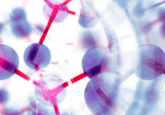A novel pretreatment device has been developed to improve biosafety within the lab

Researchers have developed a laboratory device to reduce exposure to biofluids during small molecule analysis. The pretreatment device combines a sealing technique with a direct injection technique.
Researchers from Hebei Provincial Center for Clinical Laboratories, Second Hospital of Hebei Medical University (Shijiazhuang, China) have developed laboratory equipment to reduce exposure to biofluids during small molecule analysis. The pretreatment device combines a sealing technique with a direct injection technique and prevents researchers from being exposed to biofluids.
“Laboratory biosafety has become a core focus in biological analysis, owing to the frequent occurrence of laboratory-acquired infections caused by the leakage of pathogenic microorganisms,” explained corresponding author Jianhong Zhao (Hebei Provincial Center for Clinical Laboratories).
The authors designed a fully enclosed hollow-fiber centrifugal ultrafiltration whole-blood device. The novel method allows the entire process to be performed in one micro-sealed unit- from blood collection to obtaining the ultrafiltrate. Therefore, pathogenic microorganisms contained within the blood sample remain enclosed in a negative pressure environment, reducing exposure to microorganisms and improving biosafety for the researchers.
“In this study, several bacteria and viruses were used to validate the filtration effect of the invention. Data show that the new device can completely filter bacteria and that the filtration rates for hepatitis B virus and hepatitis C virus reached 94% and 96%, respectively,” commented Zhao.
The device has shown to effectively prevent the spread of pathogenic microorganisms, which is incredibly important during an outbreak of infectious disease.
“The results show that the new preparation device can effectively block these pathogens and can improve biosafety and provide powerful protection for technicians,” concluded Zhao.
In addition, the device compared well with other ultrafiltrate preparations and demonstrated an improvement in biosafety performance. The authors have applied for a national patent in China (patent no. CN201510032095.X).
In future, the authors would like to improve the sample loading process, making it more suitable for clinical use, by adding vacuum blood collection technology to the current device.



